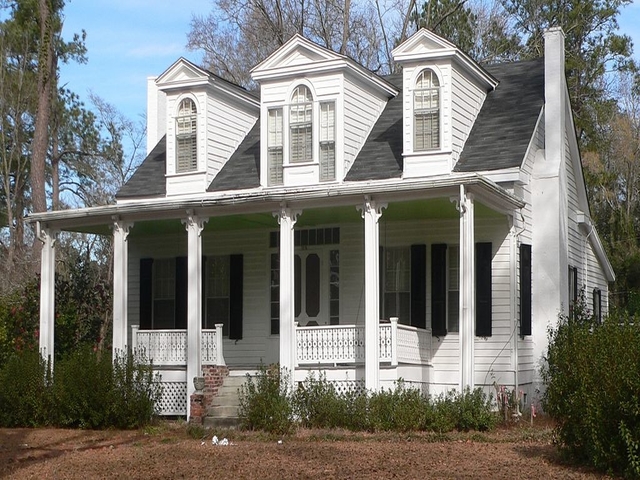
Colonel John Gotea Pressley house, located at 216 North Academy Street in Kingstree, South Carolina
Williamsburg County was probably named for King William III of England (1650-1702). Scotch-Irish and French Huguenot settlers began moving into this part of the Lowcountry around 1732, and in 1736 the township of Williamsburg was laid out on the Black River in the vicinity of the settlement of Kingstree. This area was part of Prince Frederick Parish, which in turn was part of the Georgetown District. In 1804 Williamsburg became a separate district, with the seat at Kingstree. A small part of Williamsburg later went to form Florence County in 1888. During the Revolutionary War, many of General Francis Marion's men hailed from this area, including Major John James (1732-1791). The battles of Black Mingo (September 28-29, 1780), Mount Hope Swamp (March 1781), and Lower Bridge (March 1781) were all fought in Williamsburg County. In later years the county has remained primarily an agricultural region. Nobel Prize-winning geneticist Joseph L. Goldstein grew up in the town of Kingstree.


